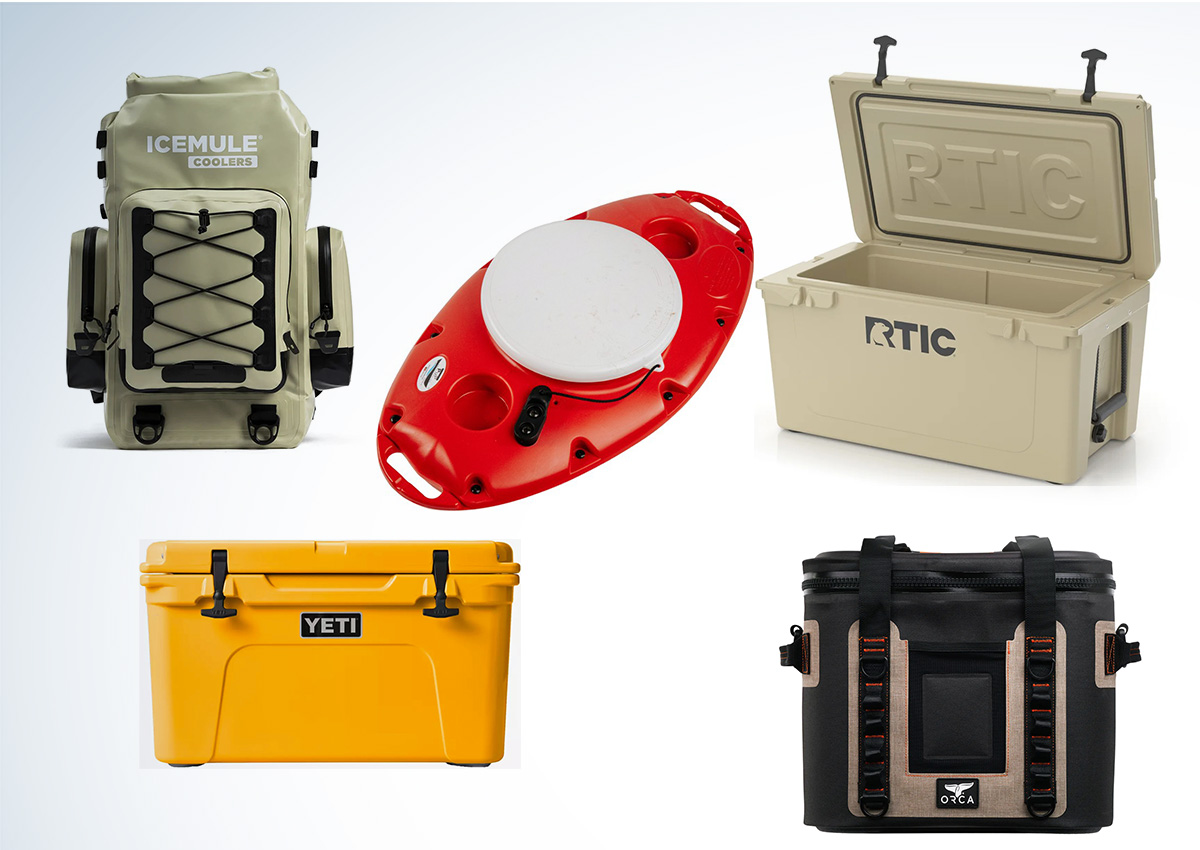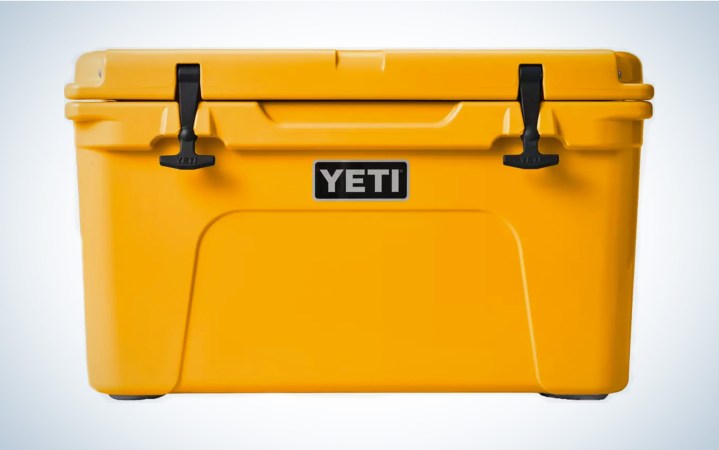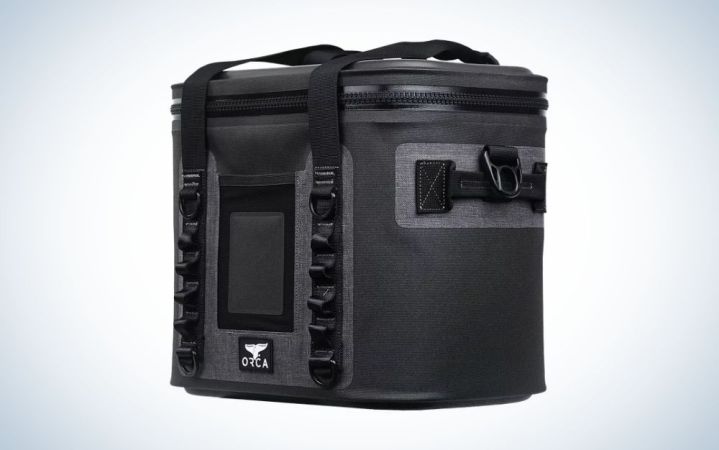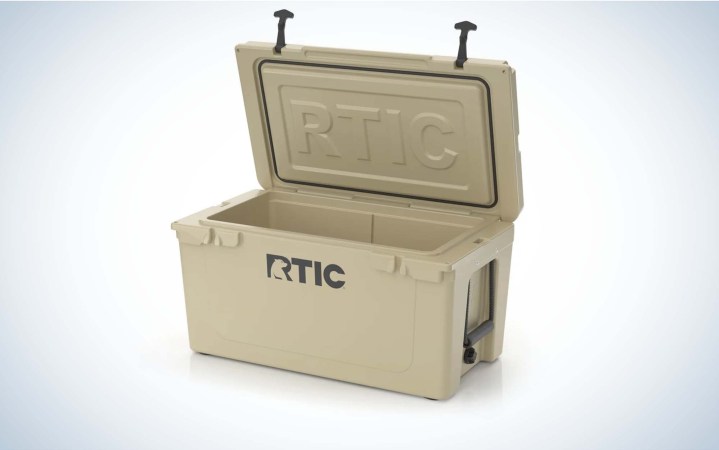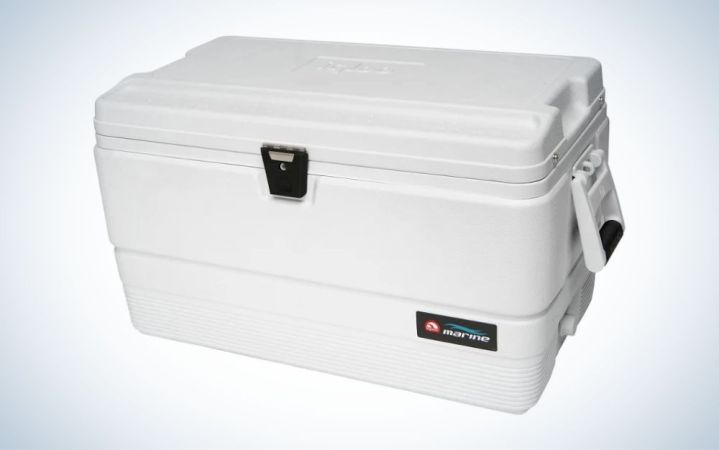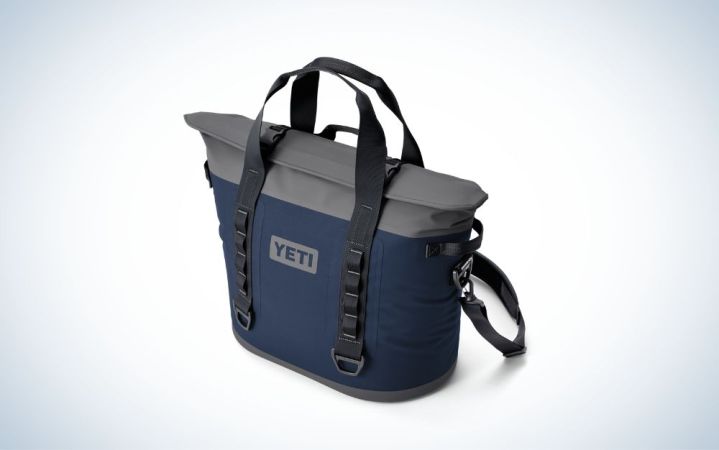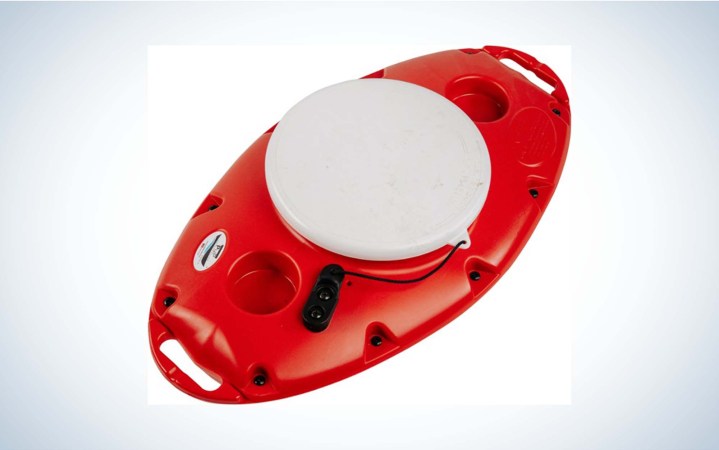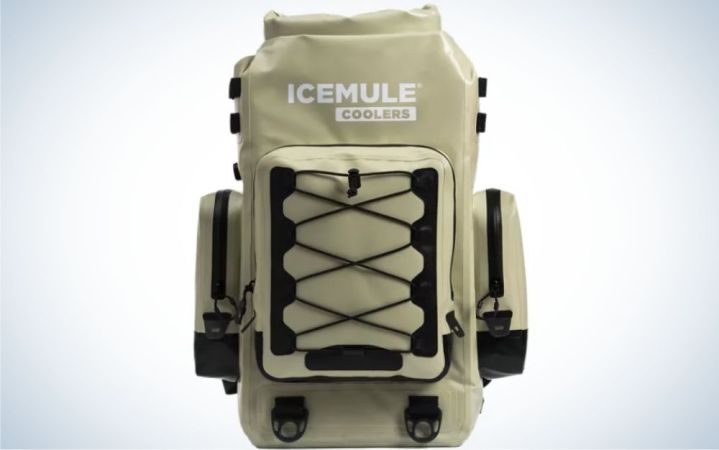We may earn revenue from the products available on this page and participate in affiliate programs. Learn More ›
Making sure that you have the right boat cooler for your particular fishing situation can be a matter of saving money, your catch, and your health. It’s that important. When I bought my first bass boat in 1996, it had no built-in cooler. That might not have seemed like a big deal at the time because I got a great deal on the boat and could bring a standalone cooler with me. But I quickly discovered that I often forgot to bring a cooler, or else it was underfoot at the worst possible time. It became apparent that having the wrong cooler can be almost as bad as having no cooler at all.
Since that time, I’ve had a series of boats—with built-in coolers and without—and I’ve had the opportunity to ride in everything from duck boats to center consoles to catamarans to luxury sport fishermen. No matter which one you have or which one you hire, if you don’t have the right cooler option, you’re not going to be happy. As someone who’s been dehydrated when I forgot to drink enough and had food poisoning from an unrefrigerated gas station sandwich, I’m now more conscious of what, when, and how I eat than ever. Having gone to Alaska and Panama and brought home salmon and tuna, respectively, I’m aware that an improper holding container can ruin the spoils of such a trip. To help you learn from my trial and error process, I’ve put together reviews of the best boat coolers that I’ve used.
- Best for Big Boats: Yeti Tundra Coolers
- Best for Packing a Lunch: ORCA Walker 20
- Best Heavy Duty for the Money: RTIC Hard Coolers
- Best Budget: Igloo Marine Ultra
- Best for Flying: Yeti Hopper M30
- Best Floating: CreekKooler
- Best Backpack Cooler: IceMule Boss
Things to Consider
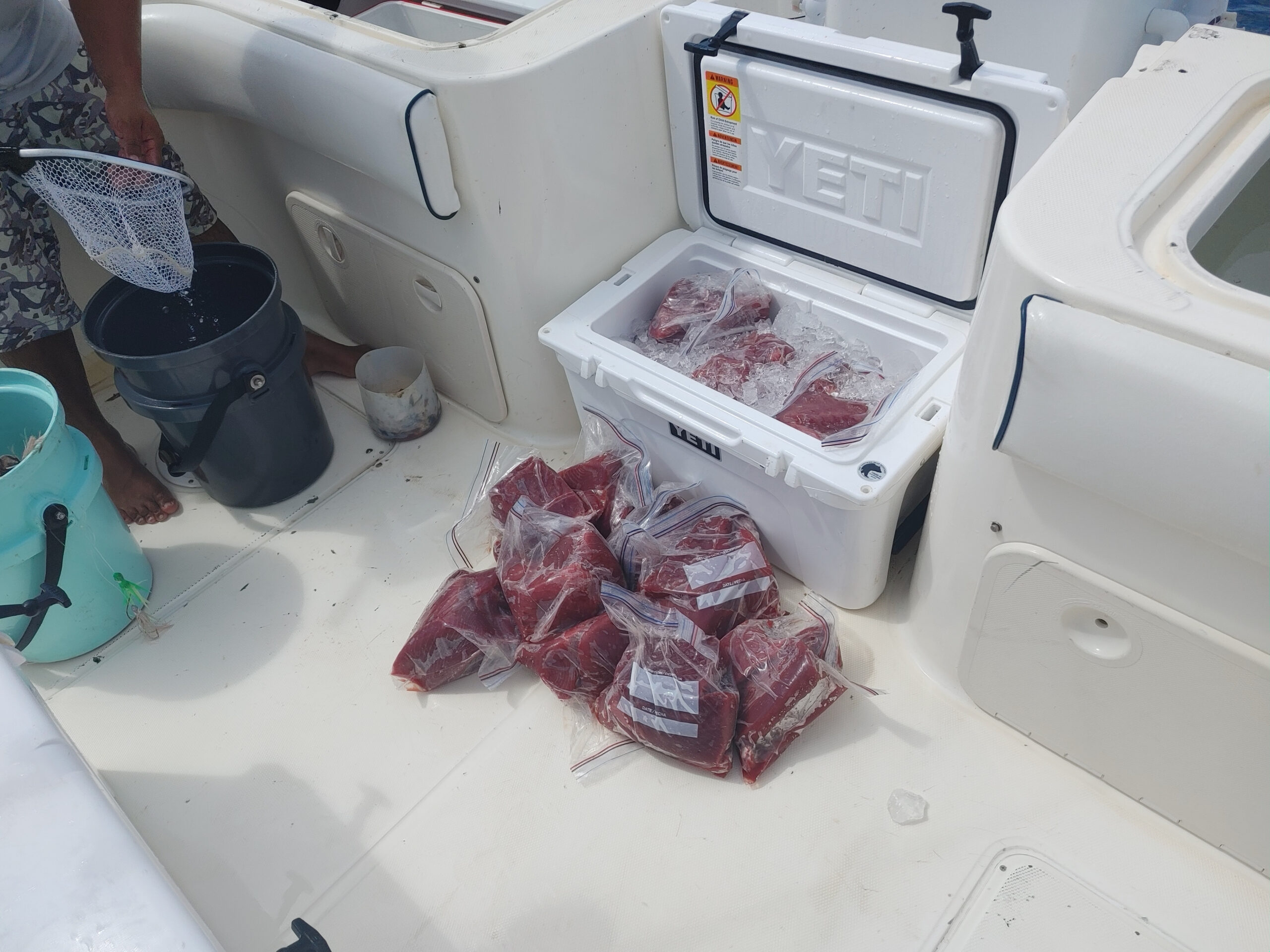
Size
How much space do you have on the boat? A 200-quart rotomolded and highly-engineered cooler can hold a lot of food, drinks, and fish, but it also commands a lot of space and ice. You want the minimum size for the maximum benefits and a shape that fits in the space provided.
Weight
On an 80-foot boat, there may be room for a few extra hundred pounds, but not in your kayak or even your bass boat or flats boat. Furthermore, if you’ll have to carry it yourself or with a partner, there’s a weight limit there, too. Some offer wheels to ease the pain of rolling them down the dock or to your vehicle, but an overweight model will still impede mobility and may affect your boat’s performance.
Budget
Whereas old-school coolers were once almost an impulse purchase, which could be made lightly, now it’s easy to spend hundreds or even thousands of dollars on a highly-specialized vessel. What can you afford to spend? It may be more than you think if you’ll use the cooler for multiple purposes, but don’t discount the possibility that you’ll need more than one to be truly happy.
Climate
Weight and size limitations aside, you may demand more of a cooler that you use aboveboard in the hot and humid Amazon River than you will of one that stays below deck on a passenger boat in the Gulf of Alaska. Nevertheless, remember that UV rays can wear down components in any place, and if it’s in salt air, your cooler’s components better have some level of corrosion resistance.
Best for Big Boats: Yeti Tundra Coolers
Key Features
- Sizes from 35 to 350 quarts
- Rotomolded
- Two-pin interlocking hinge system prevents failure
Why It Made the Cut
Battleship coolers are virtually indestructible and keep ice cold seemingly indefinitely.
Pros
- Super-tough construction
- Keeps ice cold for extended periods
- Wide range of sizes
Cons
- Expensive
Product Description
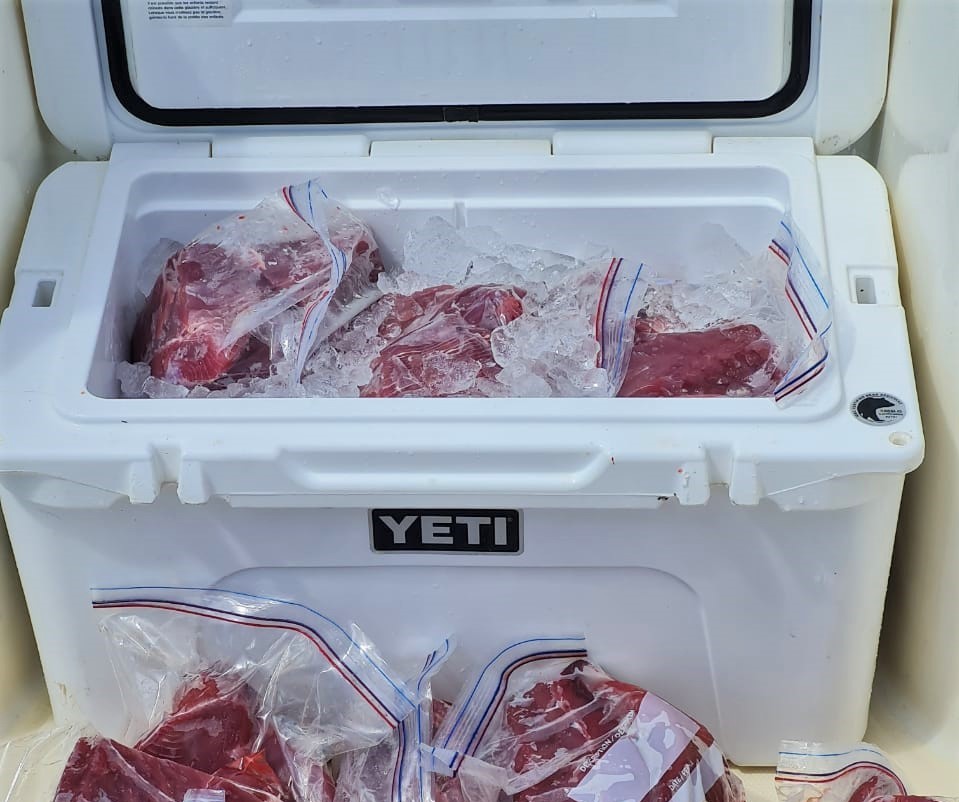
There’s a reason that just about every serious charter I’ve been on from the Keys to Panama to Guatemala to across the oceans carries not just one Yeti, but several if space allows. They keep ice cold seemingly forever, and if you’re looking to make sure that just-caught tuna stays delightfully pink. A Yeti may be the best insurance you can buy for your hard-earned catch, and by preventing spoilage, they’ll pay for themselves in no time. Yeti has become known as a “lifestyle brand,” but make no mistake—these are serious tools for serious purposes. If you’re going to be in the elements for long periods, find one that fits your dedicated space, slot it in there, fill it with ice, and you can attend to other matters.
Best for Packing a Lunch: ORCA Walker 20
Key Features
- 20 quarts
- Double denier outer material
- Comfortable shoulder strap
- Insulated walls
- Magnetic split handle
Why It Made the Cut
Compact design is highly mobile, yet it doesn’t give up anything in terms of engineering.
Pros
- Light and highly portable
- Insulated inner walls hold ice for longer periods of time
- Leakproof zipper
Cons
- Limited size
Product Description
I received one of these totes as a door prize at a remote fishing event. I didn’t think much of it until it was time to fly home, at which point it became the perfect “personal item” for stuffing under the seat in front of me. Since then, it almost never leaves my side. The refrigerator at work died, so I use the Orca Walker to keep my lunch cool all day. I also use it on road trips, and I throw it in the truck or the boat just about anytime I go anywhere. It only weighs 3.6 pounds, but it’ll hold up to 50, and it’s the perfect size for slotting into spare spaces without getting in the way. Most importantly of all, I’ve left a cold beer on ice in it on the back deck through multiple 90-degree plus days and come home to find it still icy and refreshing.
Best Heavy Duty for the Money: RTIC Hard Coolers
Key Features
- Sizes from 20 to 145 quarts
- Non-slip surfaces for standing or use as a cutting board
- Rubber T-latches and molded tie-down slots
Why It Made the Cut
Heavy-duty cooling abilities without the price of others in its class.
Pros and Cons
Pros
- Less expensive than the competition
- Keeps ice and perishables cold for long periods of time
- 3-inch foam-insulated walls
Cons
- Limited size options
Product Description
If you’re looking for the heavy-duty, long-term, virtually-unbreakable performance made popular by brands like Yeti, but can’t stomach or afford the cost of their products, RTIC makes a reasonable facsimile that does the job quite well. I’ve used them on camping trips and river expeditions and found their performance excellent, especially at their price points. If you’re looking for a true monster-sized model for your 80-foot cruiser, you might have to look to one of the more expensive brands, but if that’s the case, you’re likely not particularly budget-conscious. These are widely available and will act “as a portable refrigerator” in all but the most abusive conditions.
Best Budget: Igloo Marine Ultra
Key Features
- Sizes: 36, 54, 72 and 94 quarts
- UV protection
- Rust-resistant hardware
- Non-slip comfort handles
Why it Made the Cut
Modern version of a long-term staple has a proven design and will keep ice, fish and drinks cold for a surprisingly long time.
Pros and Cons
Pros
- Relatively lightweight
- Excels in marine environments
- Abuse-resistant hinges
Cons
- May not keep ice as long as some the best fishing coolers
Product Description
If you’ve been around boats for any period of time, then you should be well aware of the long history and reputation for quality of the Igloo brand. While this isn’t their flagship model, in some ways, it’s where the rubber hits the road, a perfect equilibrium of quality, weight, performance, and value. Whether you’re carrying it up the dock full of mahi fillets, or to a seat on the lawn at your favorite concert venue, these models will generally do the job of the high-tech, more recent technology, with less weight and less cost. Is it as heavy-duty as some of the others? Perhaps not, but make sure you’re only paying for what you really need, and not an image of who you’d rather be. These coolers even have a fish ruler molded into the top to check the size and legality of your catch. If you’re on budget, the Igloo Marine Ultra is one of the best boat coolers for the money.
Best for Flying: Yeti Hopper M30
Key Features
- Holds 36 pounds of ice
- Built-in Hitchpoint grid to attach accessories
- Quick-release buckles
- Extra-wide MagShield access mouth
Why it Made the Cut
Looks like a picnic basket, and it can serve that purpose, but it’s really a near-bulletproof cooler in fancy clothing.
Pros and Cons
Pros
- Great color options
- Remarkably strong magnetic seal
- Puncture—proof
- Extra-wide mouth for loading items stays open on its own
Cons
- Odd shape may not fit in all spaces
Product Description
I acquired the M30 soft cooler before my first trip to Panama as a means of bringing home 30 pounds of yellowfin tuna filets, but I wasn’t really sold on it until I tried it. I mean, how is it possible that a magnetically-sealed top won’t allow melting ice to leak through? Well, it’s possible for two reasons: First, this boat cooler holds ice seemingly forever; and second, that magnet is super strong and sealed, locking cold in. We checked it through as luggage on the way home, and even after lengthy delays, our precious tuna was still frozen solid. The nice thing about this item is that if you’re flying, it can be checked or carried on and is equally appropriate for both. On a boat, it slips into a storage compartment or any fairly thin gap, staying out of the way until you need it. Furthermore, they’ve packed it full of extra features, like a grid for hitching accessories and heavy-duty buckles for the unlikely possibility that the magnets fail. We’ve put this one through the wringer, and it still looks new despite being hauled across multiple continents.
Best Floating: CreekKooler
Key Features
- Sizes: 15 and 30 quarts
- Larger size floats with 30, 12-ounce cans and 20 pounds of ice
- Foamed insulation
Why it Made the Cut
No-nonsense design is perfect for floating behind an inner tube, kayak, paddleboard, or canoe.
Pros and Cons
Pros
- Hydrodynamic design
- Comfortable handles for carrying
- Multiple color options
Cons
- Limited sizes and capacity
Product Description
For generations, anglers and boaters have tried to find a way to secure a cooler outside of their one- or two-person boat when space does not allow them to keep one in it. They’ve placed them on innertubes or other contraptions, and the result is almost always inconvenience or abject failure. CreekKooler has solved this with a design that is purpose-driven for this particular mission. It flows easily, without adding resistance, yet has the heft necessary to keep your drinks cold and to prevent damage if it bounces off a rock or dock piling. If you want to get into out-of-the-way hidey holes or float with your hands free, this will get the job done. The CreekKooler even has slots for koozies on the deck so you can paddle or fish without having to find another place to secure your drink.
Best Backpack Cooler for Boating: IceMule Boss
Key Features
- Easy load top
- Waterproof zippers and welded seams
- Extra-tough exterior
- Holds 24 cans
Why It Made the Cut
Technical backpack features hide a top-notch, feature-laden cooler that’s comfortable to carry all day.
Pros and Cons
Pros
- Ergonomic design
- Multiple separate waterproof compartments
- “Belt and suspenders” designed to insulation and waterproofness
Cons
- Not inexpensive
Product Description
If you expect to be portaging your boat a long way, or wading through a flyout adventure, or even standing in the customs line with your imported filets for an extended period of time, holding a shoulder strap can be tough and annoying. By placing your weight on your back, instead, you can save the stress. Assuming, that is, your carrying device is ergonomically-designed. The IceMule fits that bill with padded shoulder straps, an adjustable hip belt, and a cross-chest stabilizer strap, but it doesn’t give up any toughness or waterproofness to get there. In fact, they’ve overengineered this model to keep the cold stuff cold, yet they’ve somehow kept it remarkably lightweight. It’s perfect for a float plane or any sized boat, and if you buy one in lieu of a hard-sided cooler, you’ll get double value as it also functions as a boat bag or general piece of luggage.
Methodology
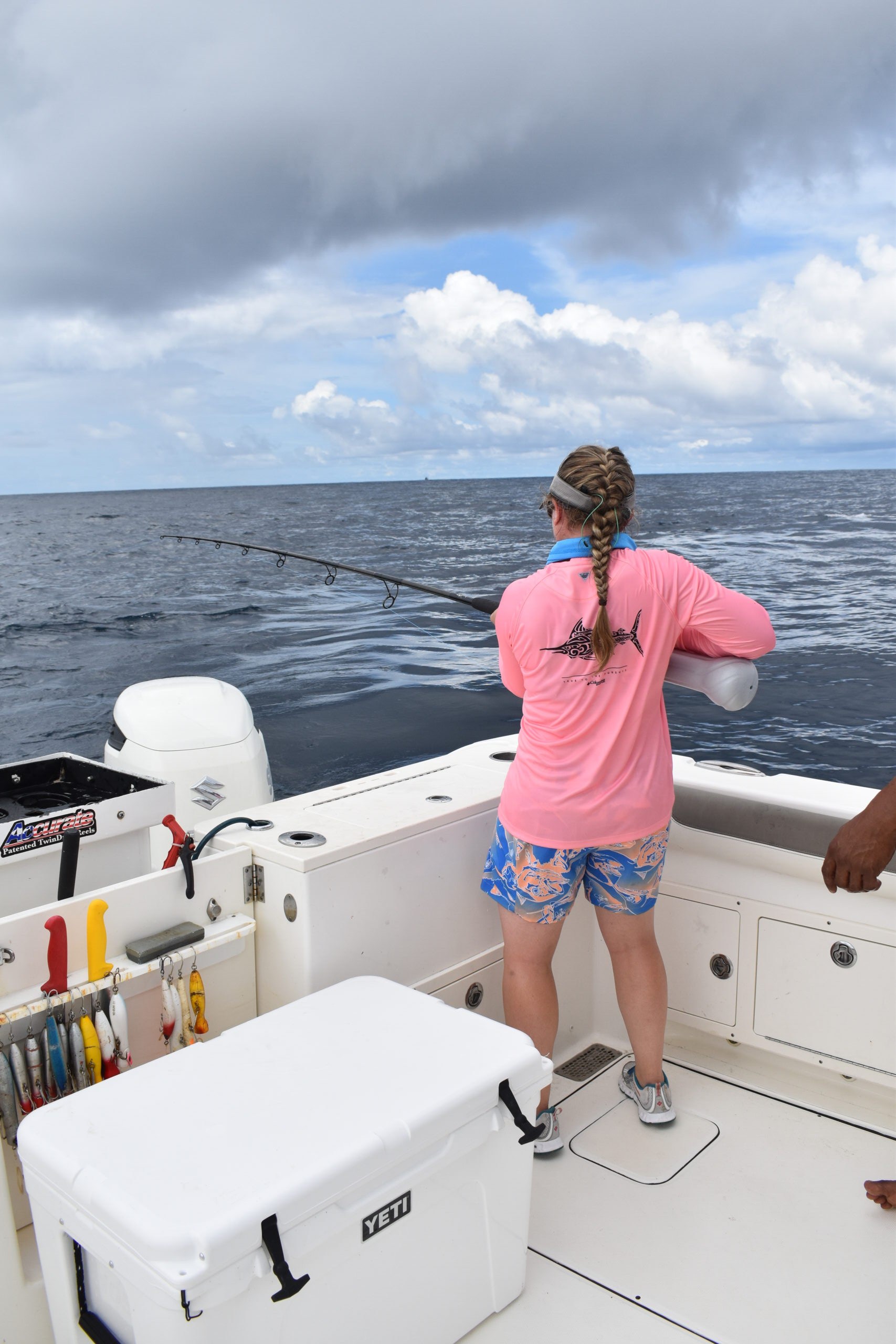
There are certain things no boat is complete without like the best fish finders, the best trolling motors, and a good cooler. I’ve used all three of those boat accessories on my boats and on charters. As noted above, I’ve learned the value of a quality cooler the hard way through dehydration, food poisoning, spoiled fish, and general discomfort. But I’ve also learned that having the wrong cooler is almost as bad as none at all. If you can’t carry it or fit it where you’re going, it detracts from the overall experience. Whether it’s a fly-in in Alaska or a tenting overnight in the Amazon, having the right version for what you need—no more, no less—is a trip-specific endeavor.
FAQ
You can use coolers from 20 to 160 quarts for fishing, and the size of the cooler you use will depend on the size of your vessel and the size of the fish you’re catching.
A 45 quart Yeti is a great all around size for a cooler. It works great as a seat as well as a drinks and food.
For deep sea fishing, you’ll want a large cooler that’s 75 quarts or larger, depending on the target species.
Final Thoughts
I don’t leave the ramp without one of the best boat coolers, and whether you’re packing a lunch or bringing home meat you’ll want one of the coolers too. Choose the one that best fits your needs and you’ll enjoy cold drinks and quality fillets for years to come.
